Over 15 years in the making, this little ‘work truck’ is a little bit clever
Words: Shane Wishnowsky Photos: Aaron Mai
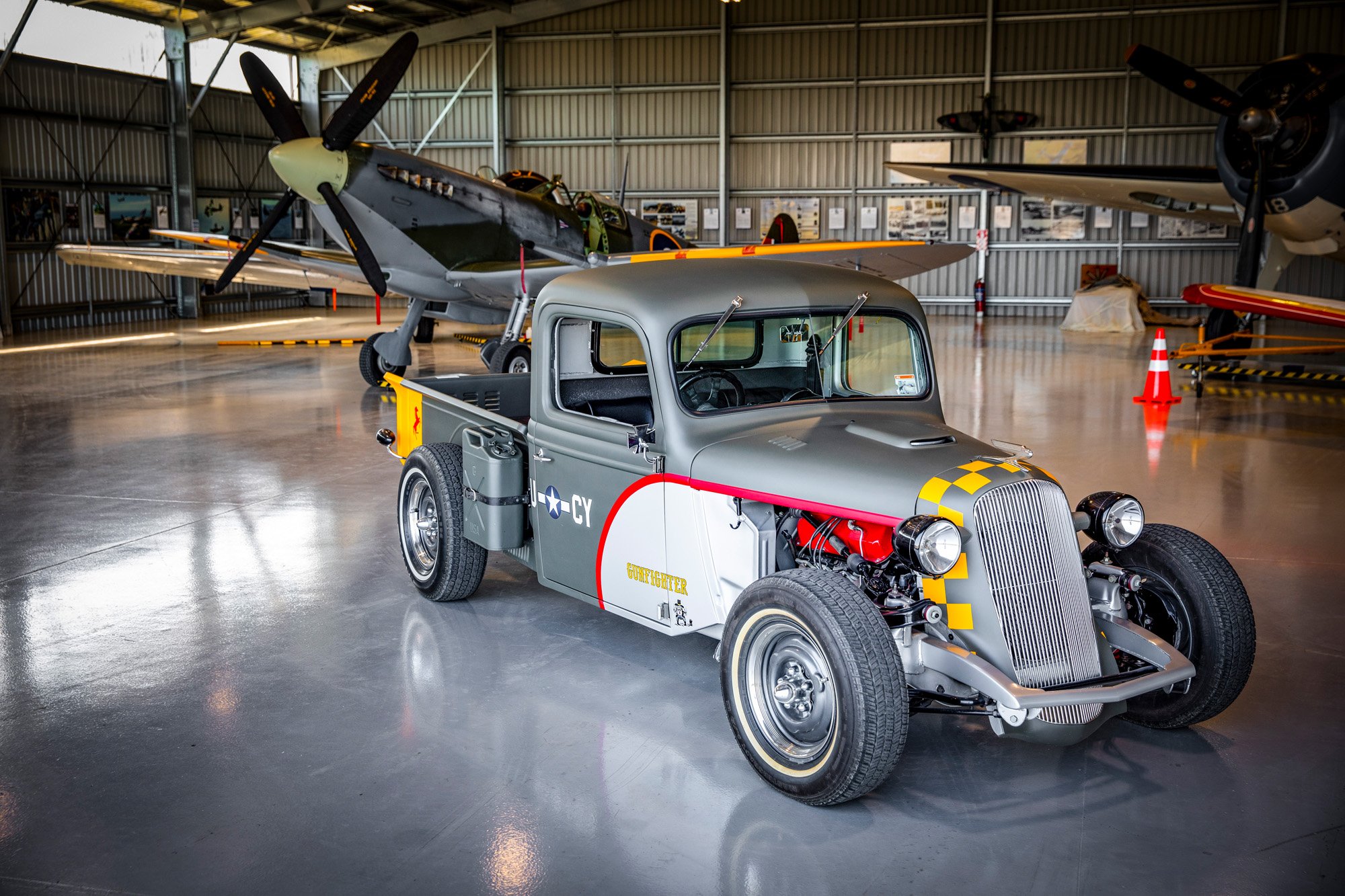
Stacey Emeny operates Mercury Garage from a pretty cool barn out the back of Shannon in the Manawatu, but don’t let the building’s well-worn looks fool you. Stacey is a genuine automotive craftsman; you could say he’s one of the last of a dying breed, a true metalworker rather than a panel replacer. The majority of the cars that roll into the rough and raw-looking building are in need of a bit more than a quick in and out patch-up job. If you’re after a full back to a bare shell, better-than-new restoration build with plenty of custom touches, then Stacey is your man.
There isn’t much that Stacey cannot do to a piece of steel — if he can’t do it then it probably hasn’t been invented yet! If you don’t believe us, then have a look at NZV8 issue 148; Paul Bailey’s black 1970 Challenger, featured on the cover, came out of that very shed. If Stacey ever needed a business card showcasing his work, then this is it: one hell of a build and arguably one of the toughest Mopar’s in the country. Customer builds aside, we’re here to talk about Stacey’s own shop truck, which has been a long time in the making.
Stacey explains, “Our brief with the truck was as follows: to have a connection to the origins of hot rodding, which in part occurred upon the completion of WWII; to pay tribute to the heroes from the years of WWII — the men and machines who gave it all for us to live in the free world as we know it today.
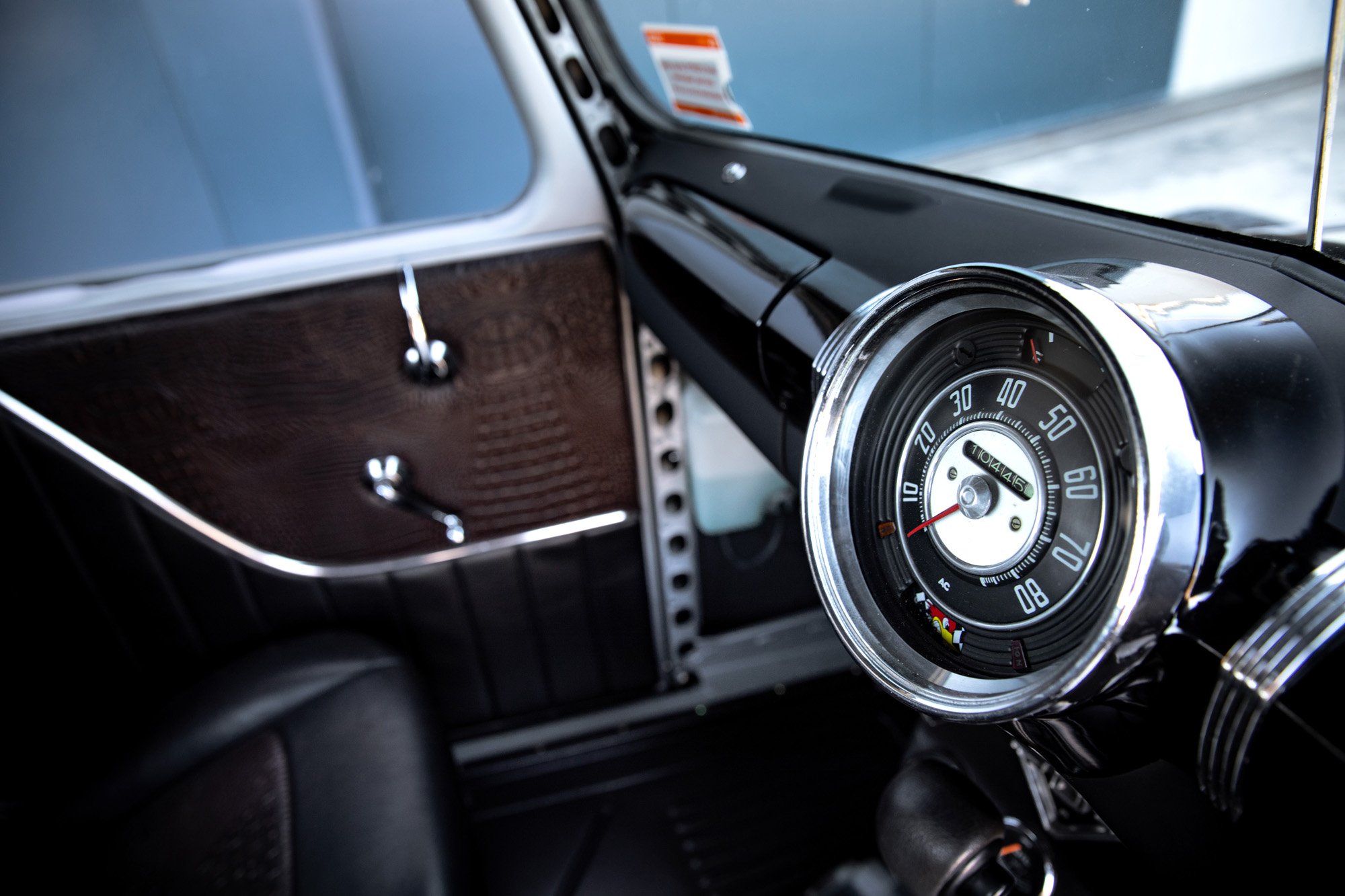
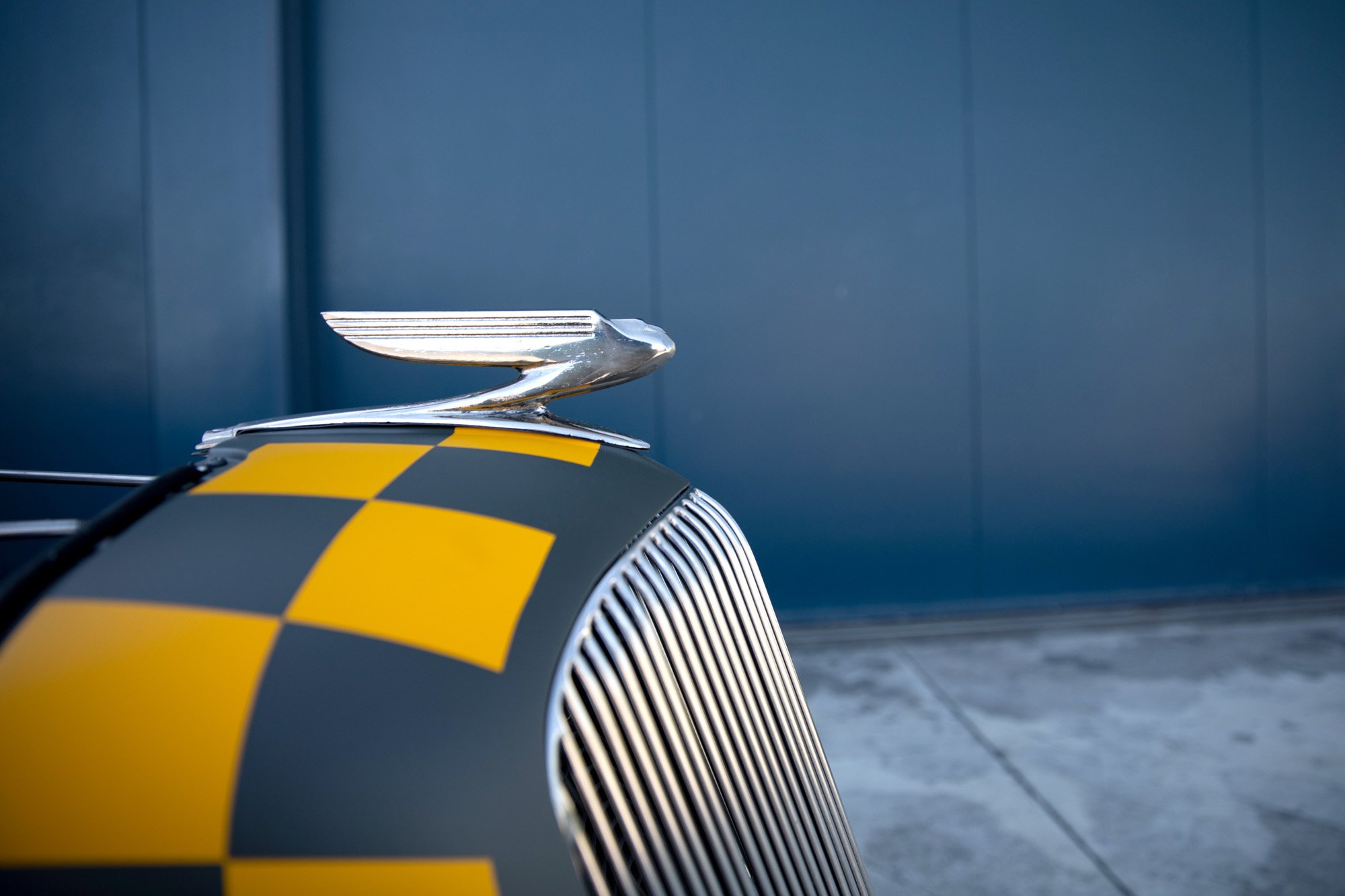
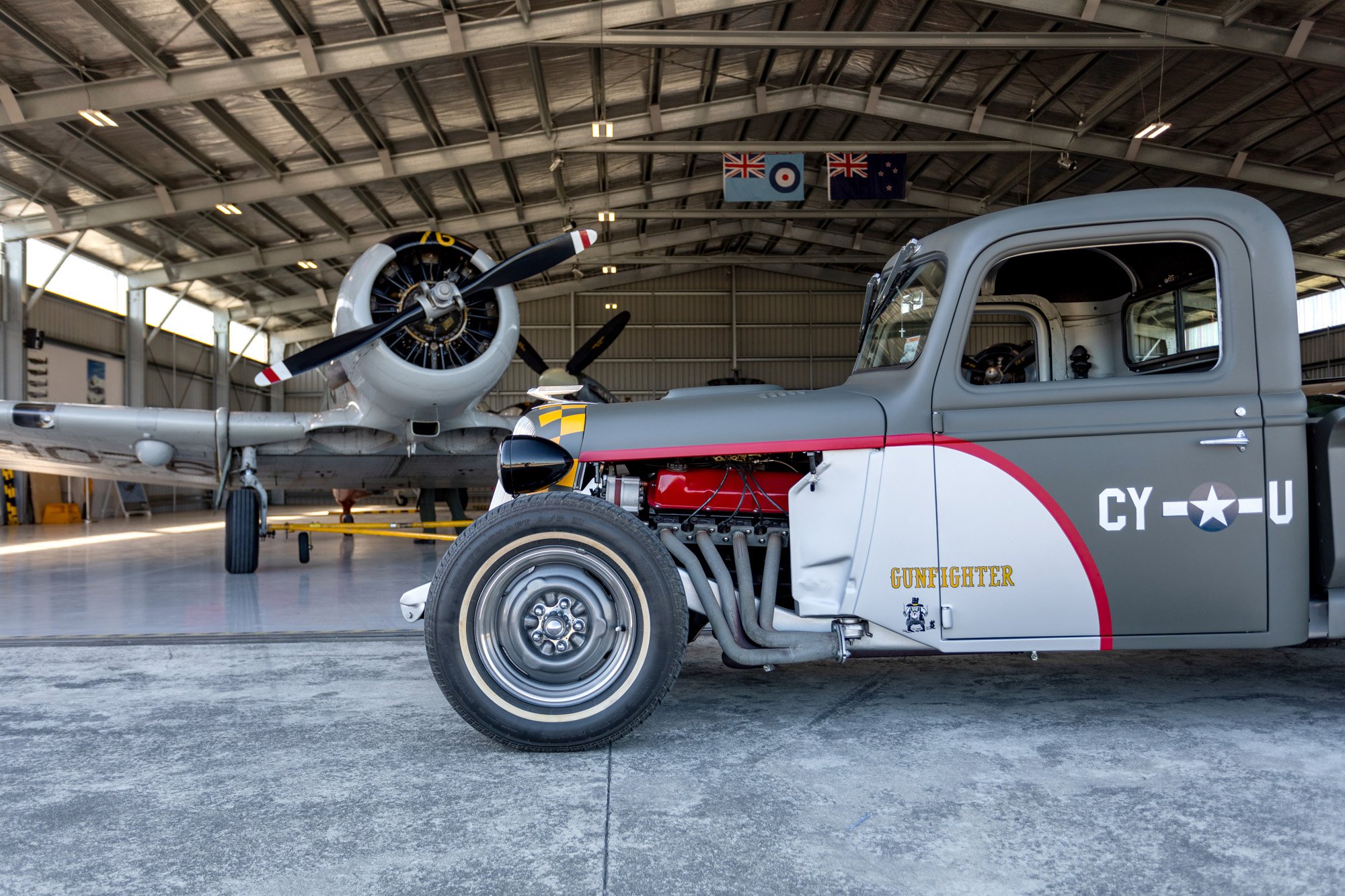
“Once the war was over, the golden era of hot rodding began. With time, money, a new-found lust for life, and a desire to go fast, California servicemen found themselves with a burning desire to build their dream cars from scratch. A lot of these guys were Air Force personnel who had experienced the thrill and adrenaline rush of speed whilst in combat.”
Stacey also wanted a vehicle that could showcase Mercury Garage’s tin work and fabrication skills — as if the Challenger wasn’t enough of an example! The ’37 pickup came into his life around 15 years ago and has been a bit of a ‘built in the background’ kind of deal, with Stacey doing a little bit here and a little bit there in-between customer builds. He wanted something easy to drive and easy to maintain that had the underpinnings of something a bit more modern than what was rolling off the assembly line in America in the late ’30s.
With this in mind, he threw away the original chassis and replaced it with one from a ’92 Mitsubishi L200. However, blending the new and old is never straightforward. In this case, the problem was due to the dimensions of the new chassis; it needed the chop.
The front section was extensively remanufactured, with the front kick-down extended to the lower rails by 100mm. At the other end of the chassis, the rear also got a fair bit of Mercury Garage custom treatment in order to make the EB Falcon diff, Watts linkage, and other rear suspension components fit.
Stacey says, “The set-up with the Japanese commercial chassis provides a very strong platform with well-designed independent front suspension and decent disc brakes and steering componentry.”
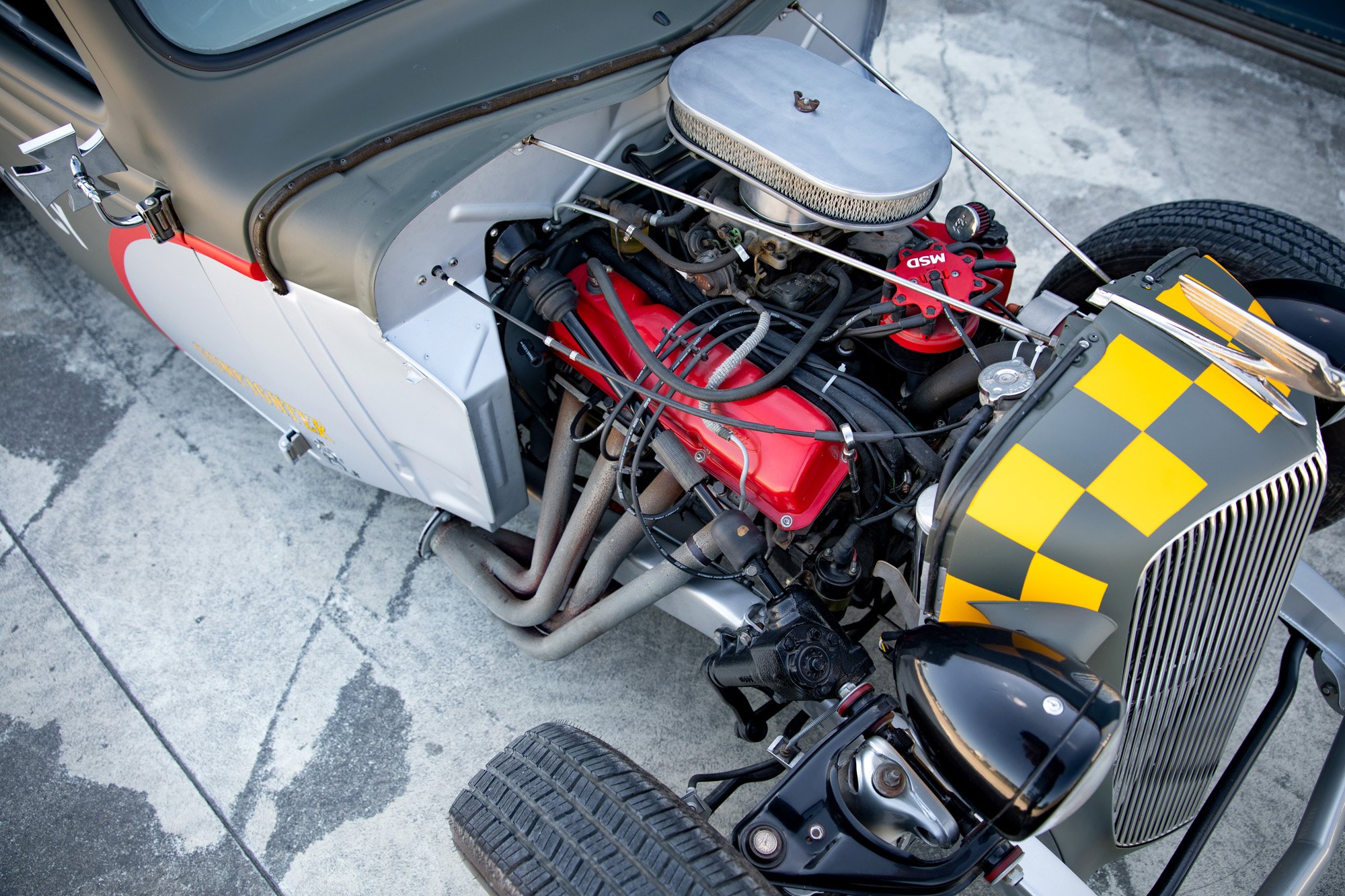
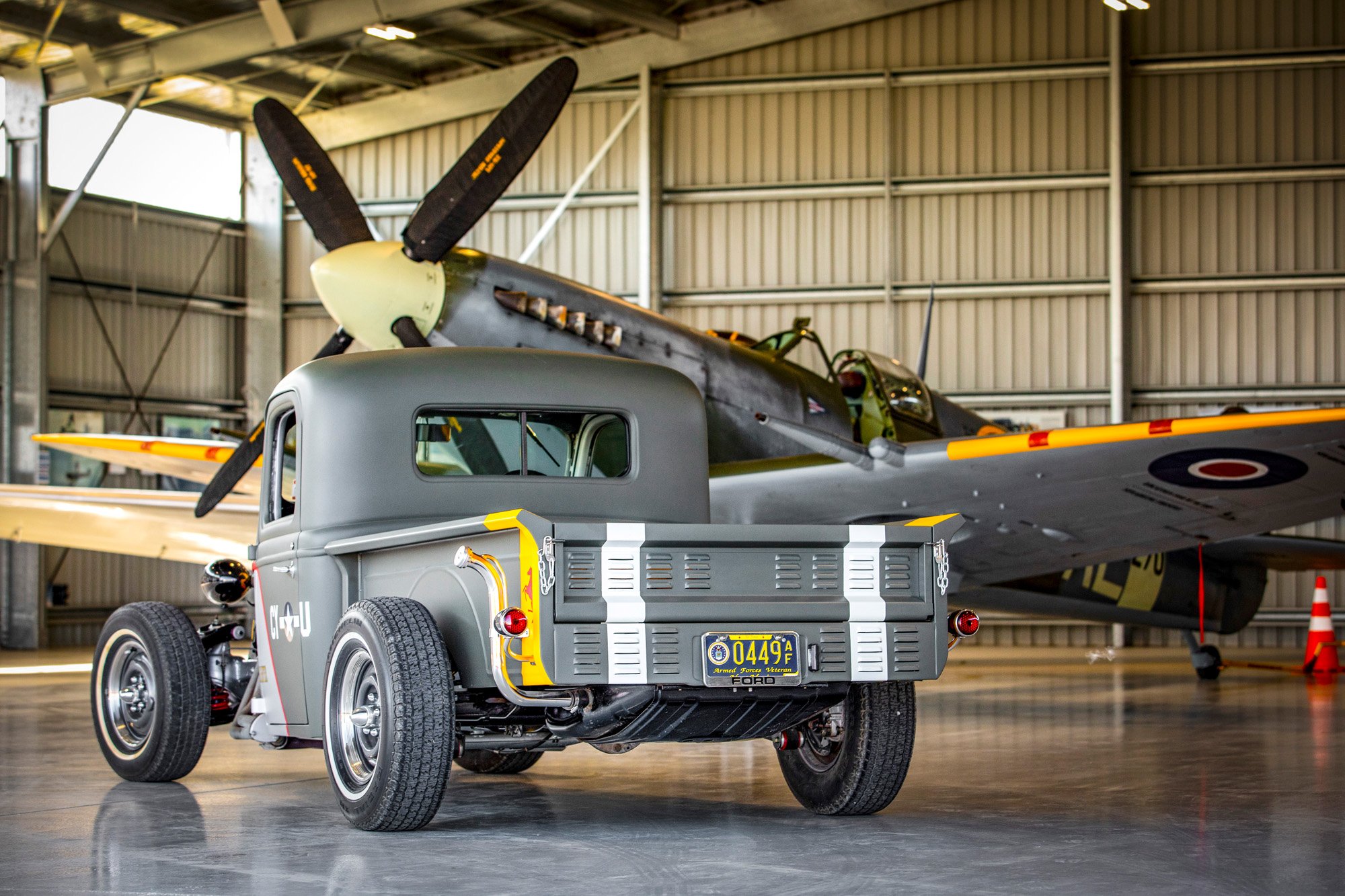
The modernising flows from underneath into the inside of the truck. Seats are from a Toyota Previa people mover. The velour was ripped off and the foam carcasses were reskinned with black vinyl and faux crocodile skin inserts. A Momd from a piece of 18-gauge alloy, is extensively louvred, and sports a custom cold air intake. The cab has been sectioned roughly three and a half inches and channelled four. The bottom has been squared off and fitted with bespoke sills. The windscreen opening has been reconfigured to accept a bonded glass install while the rear one is now a two-piece slider affair. To finish things off on the outside, a new well-side with louvred quick-release tailgate was fabricated and deck fashioned from repurposed North American oak barnwood. We think it’s pretty safe to say that there isn’t much ’37 left of it other than its looks.

Paint, as we all know, can make or break the look of a car.
“The Gunfighter livery we went with translated well to the truck’s shape. Also, this particular P-51 (D) is still airworthy, is still flying today, and gives rides at air shows throughout the USA,” Stacey says.
Kev at Layered Design in Levin mixed the custom base-coat colours for the exterior military-inspired hue. Firstly, Resene Durepox epoxy was used to protect the steel, followed by several coats of 2K high build primer. DNA Custom Paints’ flat clear coat was used to help preserve the Air Force–themed design from the elements. All signwriting and artwork was hand-painted by Jamie ‘The Brush’ Logie.
Fifteen years of behind the scenes work has certainly paid off for Stacey. The truck is a real head-turner and a fantastic platform to showcase the high-quality work that comes out of his rough and raw shed in the backblocks of Manawatu.
This article originally appeared in NZV8 issue No. 204




